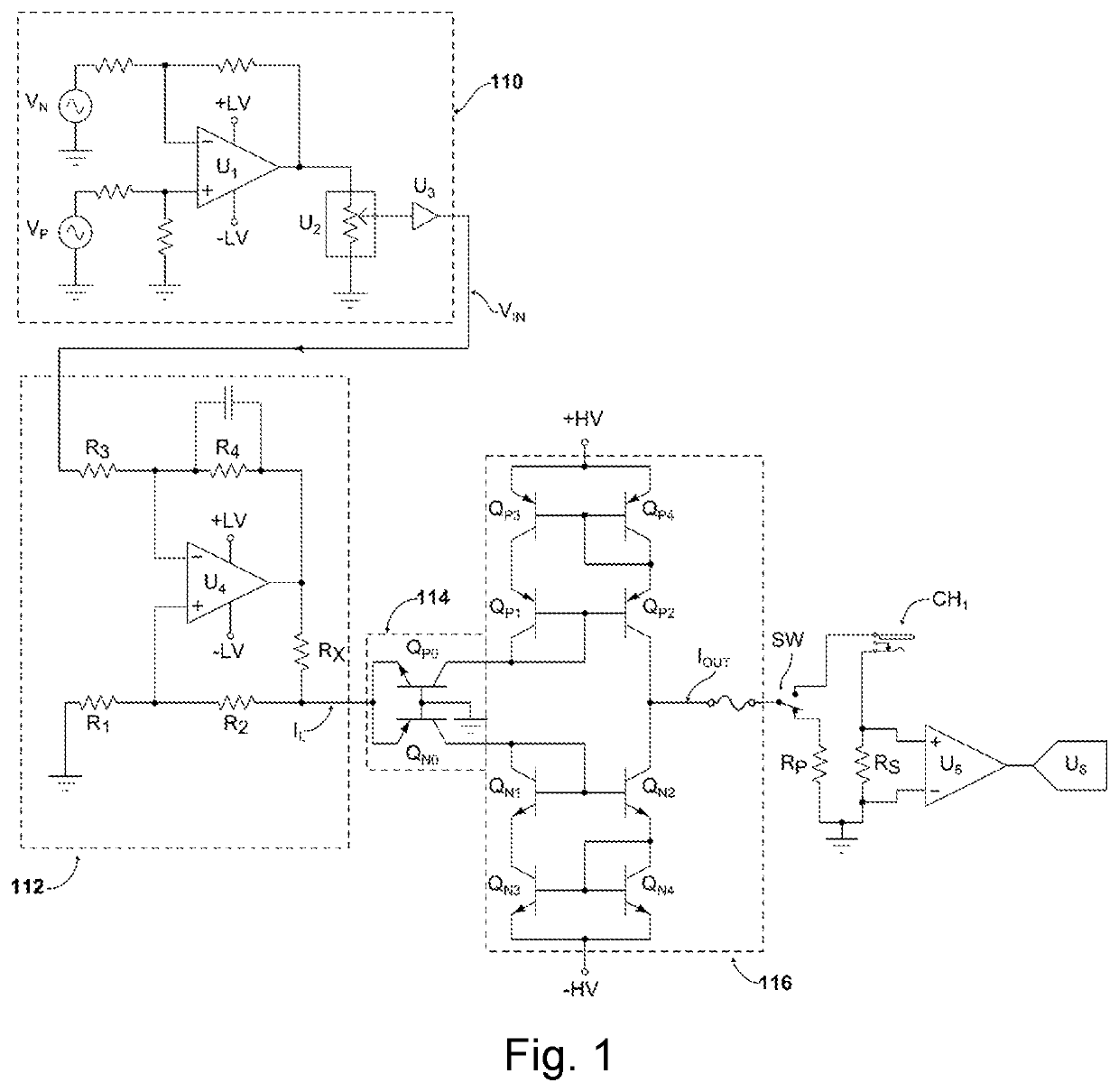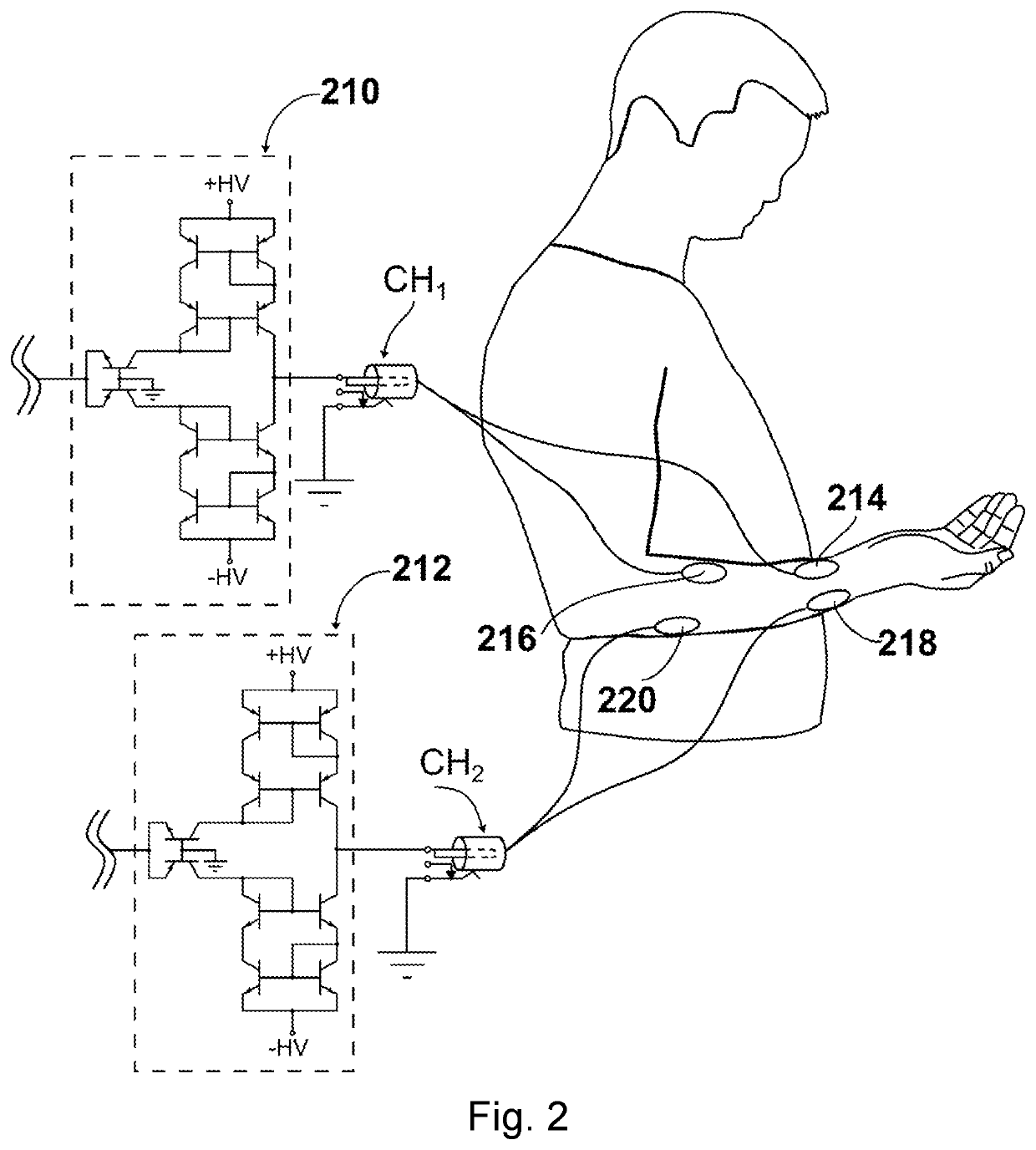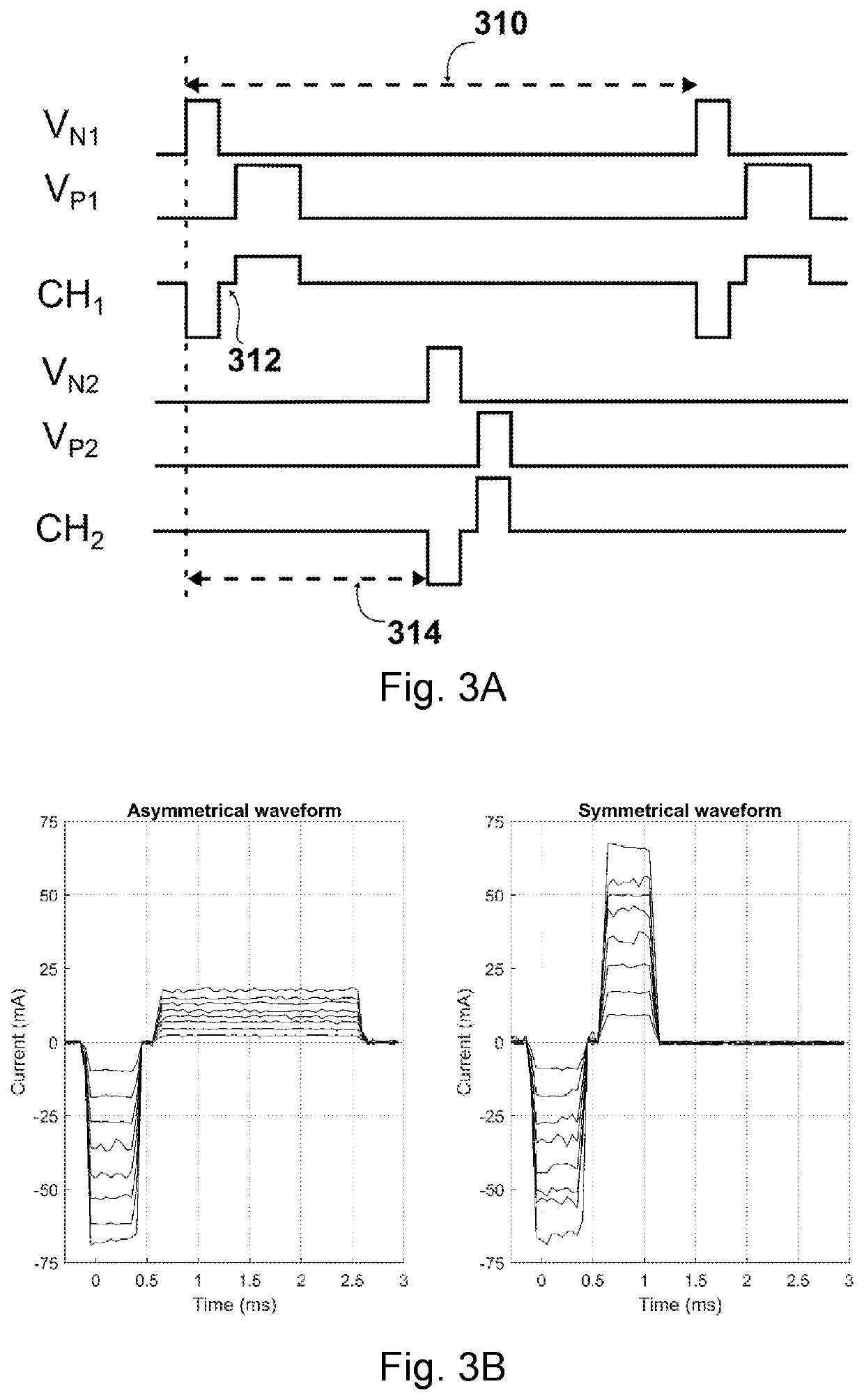Neuromuscular Stimulation Using Multistage Current Driver Circuit
a driver circuit and multi-stage technology, applied in the direction of therapy, artificial respiration, pulse technique, etc., can solve the problems of common-mode latch-up issue, large power consumption, and difficulty in regulating output current, and achieve linear and accurate performance, less quiescent power, and high tolerance to resistance mismatch
- Summary
- Abstract
- Description
- Claims
- Application Information
AI Technical Summary
Benefits of technology
Problems solved by technology
Method used
Image
Examples
first embodiment
—FIGS. 1-4—FIRST EMBODIMENT
[0027]In one embodiment shown in FIG. 1, the neuromuscular stimulator consists of a waveform generator 110, a voltage controlled current source (VCCS) 112, and output driving circuitry 114 and 116. The waveform generator 110 consists of a pair of signal generators VP and VN that connect to an operational amplifier (op-amp) U1. The periods of VP and VN correspond to periods of the positive and negative phases of a biphasic stimulation waveform, respectively. In some embodiments, the periods and shape of VP and VN are generated by a microcontroller or by a digital-to-analog converter.
[0028]Op-amp U1 is configured as a difference amplifier with adjustable gain, to compute the difference between VP and VN. The amplitude of VP can also be scaled using the resistor divider network at the positive terminal of U1, such that VP is a fraction of VN. When VP is a fraction of VN, the period of VP is proportionally increased by the microcontroller, such that net charge...
PUM
 Login to View More
Login to View More Abstract
Description
Claims
Application Information
 Login to View More
Login to View More - R&D
- Intellectual Property
- Life Sciences
- Materials
- Tech Scout
- Unparalleled Data Quality
- Higher Quality Content
- 60% Fewer Hallucinations
Browse by: Latest US Patents, China's latest patents, Technical Efficacy Thesaurus, Application Domain, Technology Topic, Popular Technical Reports.
© 2025 PatSnap. All rights reserved.Legal|Privacy policy|Modern Slavery Act Transparency Statement|Sitemap|About US| Contact US: help@patsnap.com



